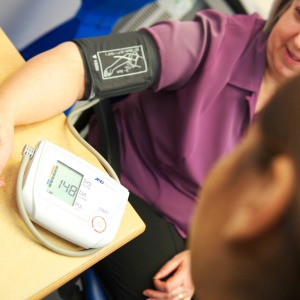Public health chiefs to trial lifetime risk score rejected by NICE

A new tool designed to predict a person’s lifetime risk of cardiovascular disease is being trialled by Public Health England, despite being rejected by NICE.
The Joint British Societies (JBS) unveiled the new lifetime risk score today in its updated guidance on cardiovascular prevention, and the developers say the new calculator will enable GPs to start a conversation with younger patients about addressing CV risk factors as part of the Government’s flagship Health Checks programme.
However, some GPs criticised Public Health England for adopting it before NICE gave it the go-ahead and warned GPs will not widely use the approach as a result.
NICE recently updated lipid modification guidance in which it recommended lowering the 10-year risk threshold for primary prevention to 10%, but ruled out use of a lifetime risk score because of a lack of evidence of interventions for people at long-term risk.
However, the lead author of the JBS3 guidance, Professor John Deanfield, from University College London, said the lifetime approach would offer advantages for earlier intervention, in particular through the NHS Health Checks programme, which he said would start trialling the lifetime risk approach over the next three months.
Professor Deanfield said: ‘We hope that the Health Checks programme will now be linked very closely with the JBS3 – so when GPs do Health Checks they will have the link to JBS3 to make the conversation about the Health Checks information more meaningful for the patient.’
‘If you measure health checks in the patient at 40 – as the Health Checks do – then the 10-year risk profile is meaningless virtually because there are few events between 40 and 50, so it doesn’t resonate with the patient, you need to talk about longer-term risk.’
He added: ‘We are going to have trials launched in the next three months at GP surgeries to see how this can be linked up on GP computer systems but then we hope to develop apps by the summer.’
Professor Deanfield also argued that the lifetime risk score brings it in line with NICE in terms of the main approaches to tackling prevention and management of major risk factors.
Related stories
Analysis: Has NICE gone a step too far on statins?
Cardiovascular societies to recommend lifetime score alongside NICE prevention approach
Analysis: Is primary prevention with statins worth the effort?
Some GPs have expressed concern it could lead to further pressure to ‘medicalise’ patients by putting them on statin or other treatments, which was one of the main criticisms of NICE’s plan to lower the 10-year risk threshold.
Dr Terry McCormack, secretary of JBS member group the British Hypertension Society and a GP in Whitby, denied it would lead to more people being put on statins.
He said: ‘It should not be about putting more on statins – I’ve never advocated that, I don’t like the idea of people taking medication without it being targeted and offered to the right people.’
However, he questioned if the guidance would be adopted in practice by many GPs.
He said: ‘I think GPs will be driven by what is recommended under QOF and what’s available on their computer systems. It’s unlikely this will be widely adopted if it does not have official approval from NICE and therefore it may end up being a case of individual GPs deciding to use it or not.’
Dr Rubin Minhas, former NICE lipid modification guidance advisor and a GP in Kent, said the approach was not evidence-based and needed further evaluation under the auspices of NICE before being rolled out.
He said: ‘I still think the lifetime risk approach is unproven and unnecessarily medicalises a large swathe of the population. There needs to be a trial of this as an intervention, looking at the opt-in rates, how many people modified their lifestyle as a result, how many started treatment and then how many had maintained those changes a year or two later. You don’t go straight to policy based on opinion and eminence.’
Dr Minhas added: ‘I think people would expect Public Health England works within the scope of care described by NICE in guidelines and if Public Health England wants address a research issue identified by NICE that’s fine, but – I think it causes a lot of confusion and contradiction if they support something the implementation of something that is not recommended nationally. You could end up with the left-hand not knowing what the right-hand is doing.’
PHE lead for the NHS Health Check programme Jamie Waterall said: ‘JBS3 is a welcome report…Its key feature, the life-time risk calculator, presents a real opportunity to help people understand their risk of developing CVD in a more meaningful way.’
‘Anyone providing an NHS Health Check must be able to talk effectively about risk, in a way that that makes sense to the person having the NHS Health Check. There’s no single way to communicate risk but the application of this creative new tool as standard practice within the NHS Health Check programme, will be considered by the programme’s Expert Scientific and Clinical Advisory Panel (ESCAP).’
A NICE spokesperson said: ‘It’s important that health programmes adopt an evidence based approach which is appropriate to the aims they are trying to achieve. We are currently consulting on the NICE draft guidance on lipid modification. We will look with interest at the JBS3 recommendations.’
Visit Pulse Reference for details on 140 symptoms, including easily searchable symptoms and categories, offering you a free platform to check symptoms and receive potential diagnoses during consultations.










